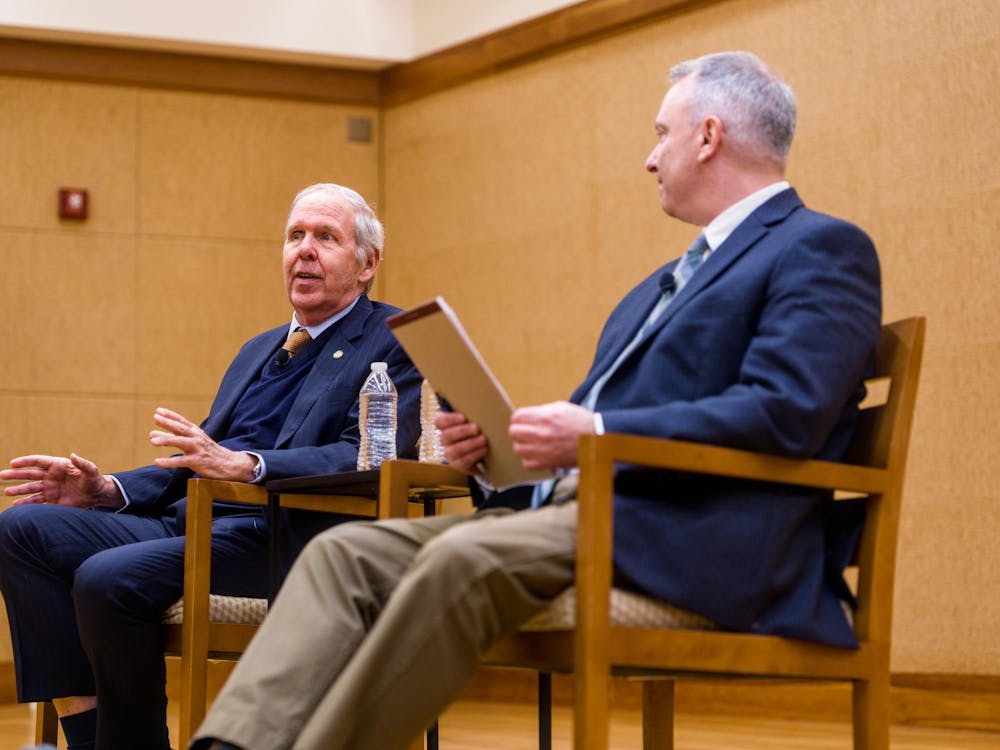Below is an academic strategic plan President Teresa A. Sullivan presented to the Board of Visitors on May 3, outlining five broad areas for academic improvement, in addition to providing an overview of several advantages and challenges central to the University's thriving:
"I have now had my senior team in place for nearly an entire academic year, and I am writing to provide a personal perspective on strategic direction for the Academic Division at the University. Since I arrived in August 2010, I have worked with the Rector and Visitors on planning for two other important functions of the University: the strategic plan for the Health Center and a strategic exercise to examine and benchmark our financial aid program, AccessUVa. These two areas represent large financial commitments of the University and also important risk areas. The academic program, however, is the heart of our mission. These ideas here have been shaped by discussion with the Provost, the Chief Operating Officer, deans, and other key personnel, but this framing is my own.
At the time of my appointment, I was explicitly instructed not to do a strategic plan for the academic program. The University had already conducted a series of strategic plans, and the faculty were said to be fatigued and discouraged by the lack of follow-through on those plans. For the last several years, the University of Virginia has been guided by the strategic plans, Virginia 2020 and the Commission on the Future of the University (COFU). These documents have served as a roadmap for the advancement of the University. The central strategies of Virginia 2020 (developed in 2002) focused on four themes: fine and performing arts, science and technology, international activities, and public service and outreach. COFU (developed in 2008) narrowed the focus to three immediate priorities: the student experience, advancing education and research in STEM-H fields, and global education. The Board has been provided several updates on COFU and the University has made limited strides forward in implementing the aspirations expressed by these plans.
Our faculty and schools continue to be ranked among the best in the nation. Law, McIntire, and Darden have strong claims to be top ten schools. Nursing and Curry have had recent notable increases in their rankings. Our lowest rankings are in the schools that together educate most of the undergraduates: the College, SEAS, and Architecture. These schools have strong specialties and specialists, but not the overall recognition enjoyed by other schools. Nevertheless, the overall undergraduate program is ranked second or third among public institutions, surpassed only by the flagship University of California institutions that are larger and much more invested in the sciences than Virginia. It is true that we have some international "star" quality faculty, but many fewer than most of our peer institutions. Rather than relying on a star system, Virginia has achieved its rankings through strong teams of faculty, and the whole has been greater than the sum of its parts.
Although there is certainly much we can learn by examining what is occurring at peer universities, leadership in higher education requires that we set our own sights and set the standards for others to emulate. This was the aspiration of Mr. Jefferson and one I hold as a central tenet of our mission. With each generation the University of Virginia has aspired to define its own model for higher education, one that continues to be widely respected for its originality. Our community seeks to be distinctive in several ways. Our efforts are rooted in a set of core principles: excellence, honor and self-governance, innovation and collaboration in the pursuit of knowledge, leadership for the public good, and providing a vibrant breadth of academic offerings within and across our schools. These principles define us, were originally expressed by Mr. Jefferson, and must continue to serve as the guideposts for our future strategic development. These principles shape how we choose our academic strategies, how we teach our students and prepare them, and how we bring the knowledge, energy and commitment developed in the university to the benefit of society through service.
A second important characteristic of the University is scale. Our competitor public institutions are typically much larger, and we have foregone the economies of scale they can achieve in favor of an emphasis on smaller courses and closer interaction. Our competitor private institutions are typically smaller, but do not face the political pressures to grow in the service of the Commonwealth that we feel. One result of our scale is that our departments are typically smaller than those at most research universities (including privates). Rankings are known to correlate with size. Thus, our choice to remain relatively small means that collaboration across the Grounds






